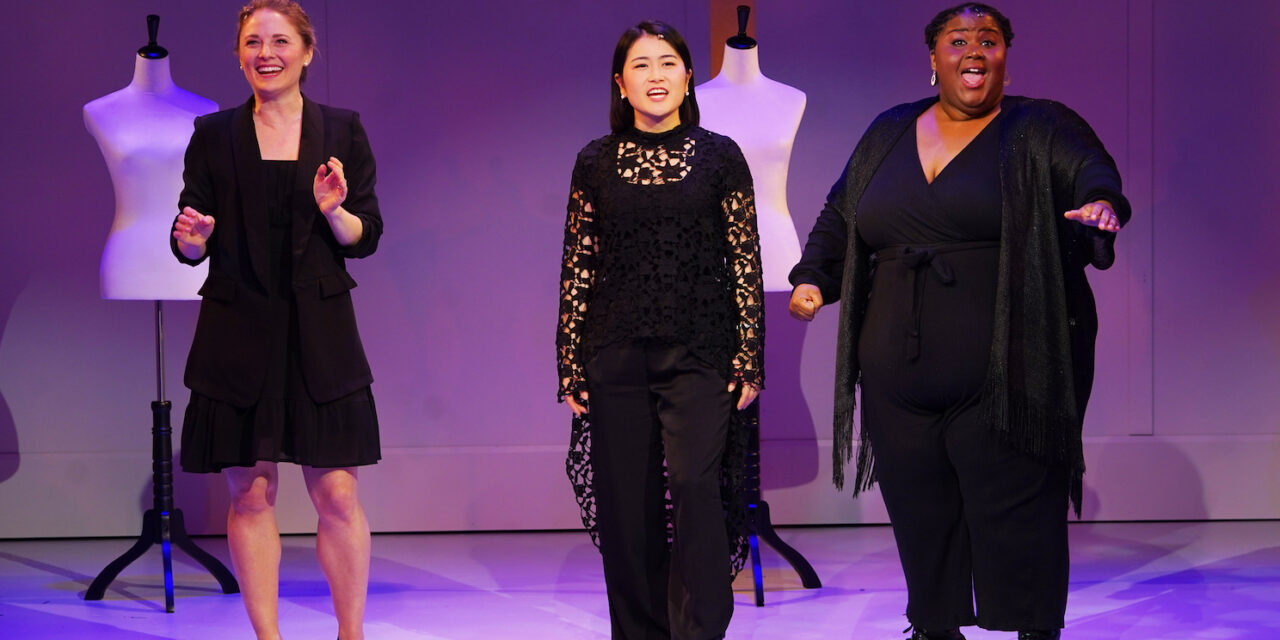By Samuel L. Leiter . . .
Jack Heifner’s Vanities, a comedy-drama whose run of 1,785 performances broke Off-Broadway records following its 1976 opening at Playwrights Horizons, went on to become a staple of regional, dinner theater, and college productions (including one I myself directed in 1985). After all, just consider its basic appeal: three attractive Texan BFFs move through the years in three scenes set in 1962, 1968, and 1973, allowing us to witness not just the evolution of their friendship but to recall—albeit quite superficially—some of the socio-historical background of those eventful times; as a topical reference reminds us, the times they were a-changing.
Though only a decade was represented, it offered a chance to look back nostalgically at the period’s changing fashions and morality, in a vein not unlike time-hopping plays such as Same Time Next Year. It was the kind of structure one might even have considered presenting in reverse order, like Sondheim’s Merrily We Roll Along, to see by going backward how things got to where they did. Its chief preoccupations focused on the shifting landscape for women at what became the height of the bra-burning era, with the characters representing different places on the era’s feminist spectrum.
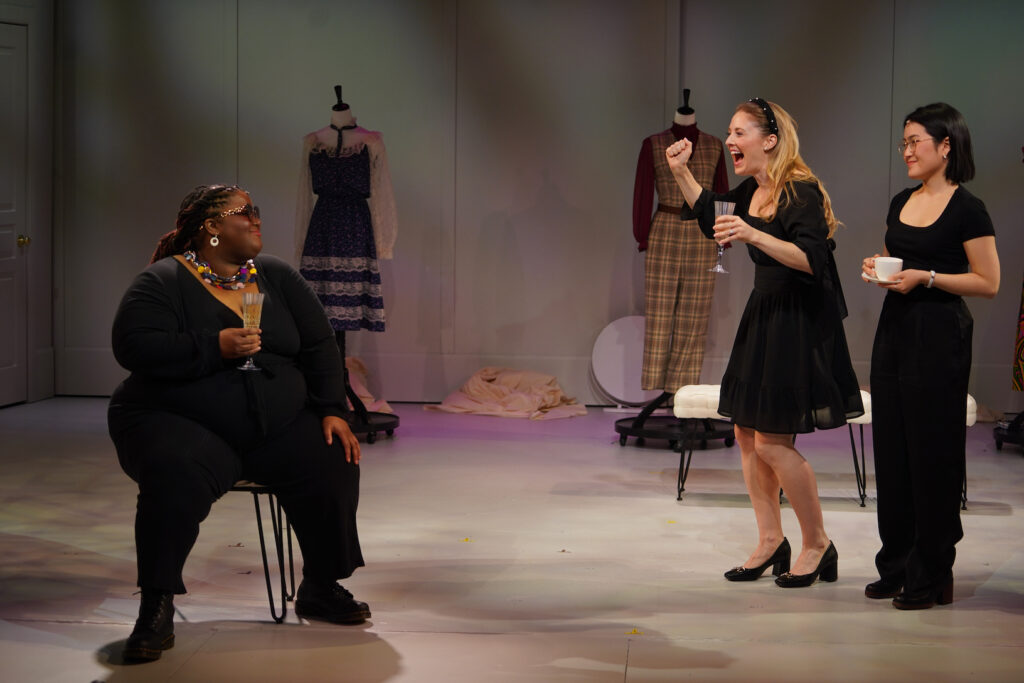
Given the play’s low-budget needs, and the juicy opportunities it offered for three talented actresses (Kathy Bates was in it), it’s not surprising that Mr. Heifner sought to extend its reach by turning it into a chamber musical. He and lyricist-composer David Kirschenbaum premiered this version at TheatreWorks in Palo Alto in 2006, followed by its 2009 New York debut at Off-Broadway’s Second Stage, and its current version—revised—enthusiastically staged by Will Pomerantz (through April 23 at the Theatre at St. Jean’s), with modest choreographic contributions by Shannon Lewis. While the original structure and plot remain intact, this “revisal” adds a coda set in 1990 in the Texas town of the first scene, allowing the friends, estranged and scattered for 17 years, to reunite for a happy ending at the funeral of one of their mothers.
I’m not convinced that musicalizing Vanities improves it. The 1990 extension notwithstanding, the material remains a time capsule from over half a century ago, its historical allusions (JFK, Vietnam, Hair, pot, flower children, etc.) deeply ingrained in the memories of the older spectators, who’ve seen countless stage, film, and TV reminders of them (what could be more triggering than to be told it’s November 22, 1963?). I suspect younger visitors couldn’t care less.
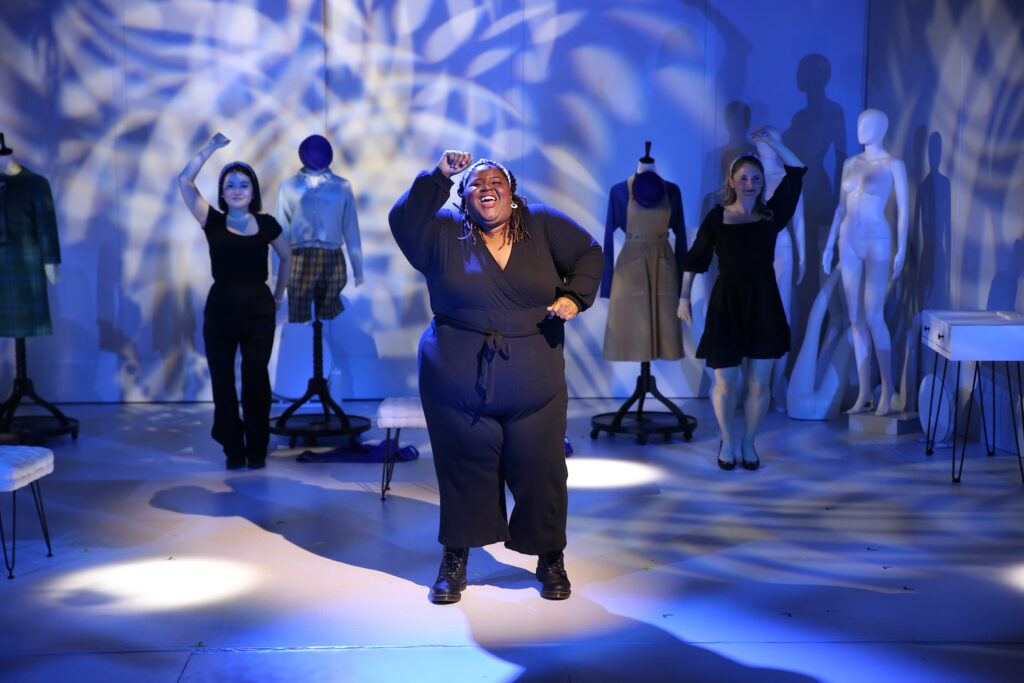

And, where the show has the opportunity to provide at least a visually nostalgic reflection of those bygone days through wigs and costumes, it regrettably goes another way. Designer Barbara Erin Delo instead dresses the performers in black ensembles, each modified only slightly from year to year, inviting fashion boredom. Meanwhile, reminders of what the characters might actually have worn are placed upstage on three white dressmaker dummies. Apart from the lettered high school cheerleader outfits of 1963, the garments displayed are largely unstylish and, for the most part, mediocre representations of shifting tastes. Moreover, the dummies fail to even slightly replicate the actresses’ radically different silhouettes, muddying any attempt to assign their contents to particular characters.
Further, the undeniably talented cast can’t dispel the feeling that the casting—in step with the increasing trend toward diversity in all forms of media and entertainment—is questionable for characters growing up in 1950s and 1960s Texas. For a show concerned with both women’s issues and social change, the text’s lack of reference to what’s right before us makes no sense, nor do a couple of lines that go counter to what we see.
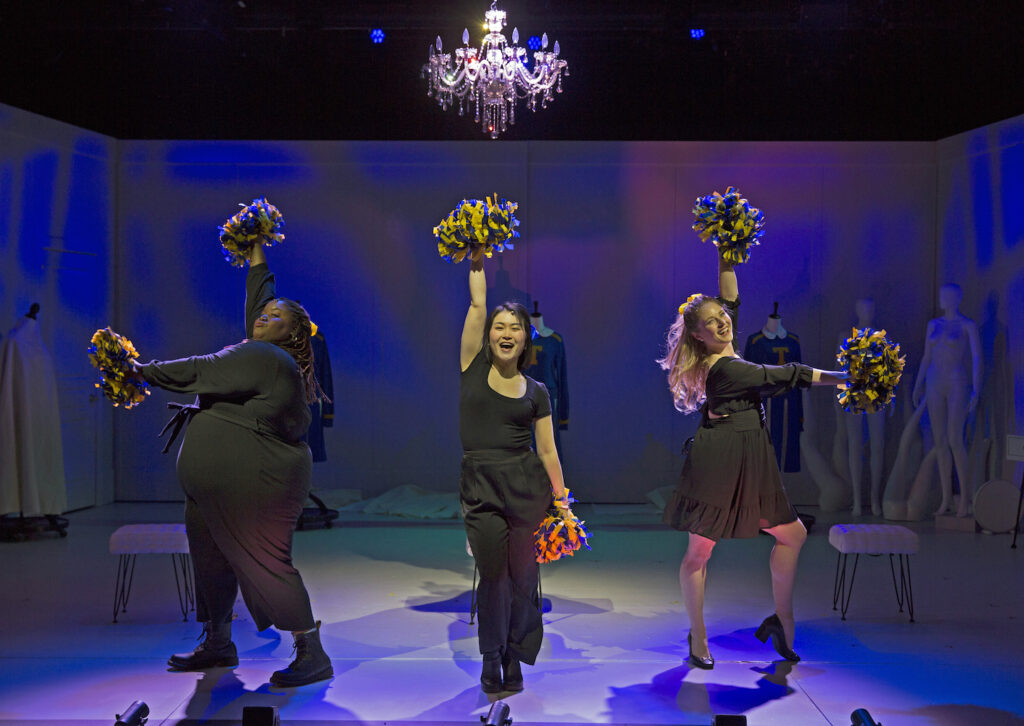

Mr. Kirshenbaum’s score, played by an over-amped, offstage ensemble of five, led by Deborah Abramson, seeks to capture the musical sounds (bouncy Bacharach occasionally comes to mind) of the times depicted. Pleasantly tuneful and lively as it often is, however, it rarely exceeds a level of generic familiarity. Little of it sounds particularly reminiscent of the music it’s supposedly modeled after—too much is loud, heavily rhythmic, and repetitious; and the lyrics are sometimes sung so quickly they become indecipherable.
Set designer James Morgan—the York’s excellent, long-serving artistic director—has provided a neutral, sparsely furnished, off-white box set whose upper-stage left corner has several white, plastic, naked mannequins supplementing the aforesaid dressmaker dummies. Perhaps, like the large, lit, handheld mirrors into which the actresses often sing, they’re meant to symbolize the way the women’s vanity contends with society’s expectations of them. Whatever the reason, their presence in the large room, which serves for all locales, is a puzzling distraction.
When we first meet sexually free Mary (Jade Jones), socially uptight Joanne (Hayley Podschun), and obsessively well-organized but otherwise nebulous Kathy (Annie Keum) in 1963, they’re Texas high school seniors, the kind of popular cheerleaders who participate in planning the school’s extracurricular events. Five years later they’re sorority sisters in Kappa Kappa Gamma at the same college, their social and romantic proclivities beginning to coalesce; and their future interests, as they prepare for graduation, under consideration.
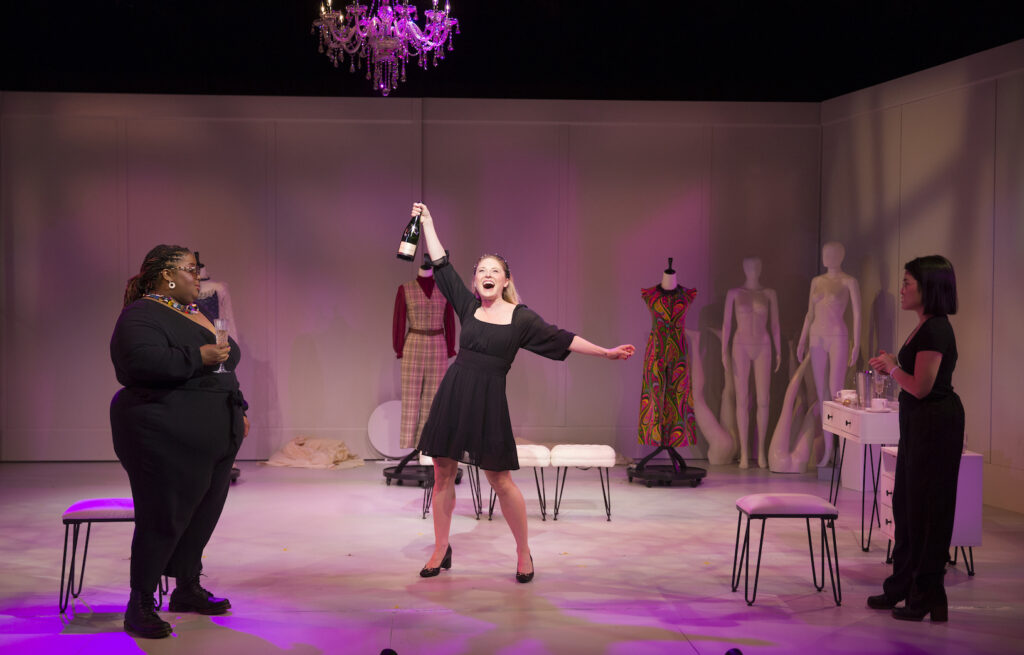

Fast forward another five years, and the women, having graduated, joyfully reunite in New York at Kathy’s fancy New York apartment, owned by someone else; despite her surroundings, Kathy is emotionally and intellectually unsettled, spending her days reading all the books she ignored at school. Once insistently virginal, Joanne is a conservative housewife with three kids—another planned—and a restrictive husband, her high school sweetheart. And the sexually liberated (sharing love with both sexes) Mary runs an erotic art gallery that the shocked Joanne considers pornographic. The trio’s viewpoints clash, a nasty revelation is made, the gathering ends sourly, and the friendships are not healed (which may be wishful thinking) for 17 years.
Whether ending the play in 1990 is a satisfactory choice can be argued, as it avoids so many of the huge changes on the horizon at the moment just before the internet age was launched. Perhaps a Vanities II might examine women’s lives during those tempestuous times, although it would now be unthinkable for it to be written by men.
Vanities—The Musical. Through April 22 at the Theatre at St. Jean’s/York Theatre (150 East 76th Street, between Third Avenue and Lexington). www.yorktheatre.org
Photos: Carol Rosegg


